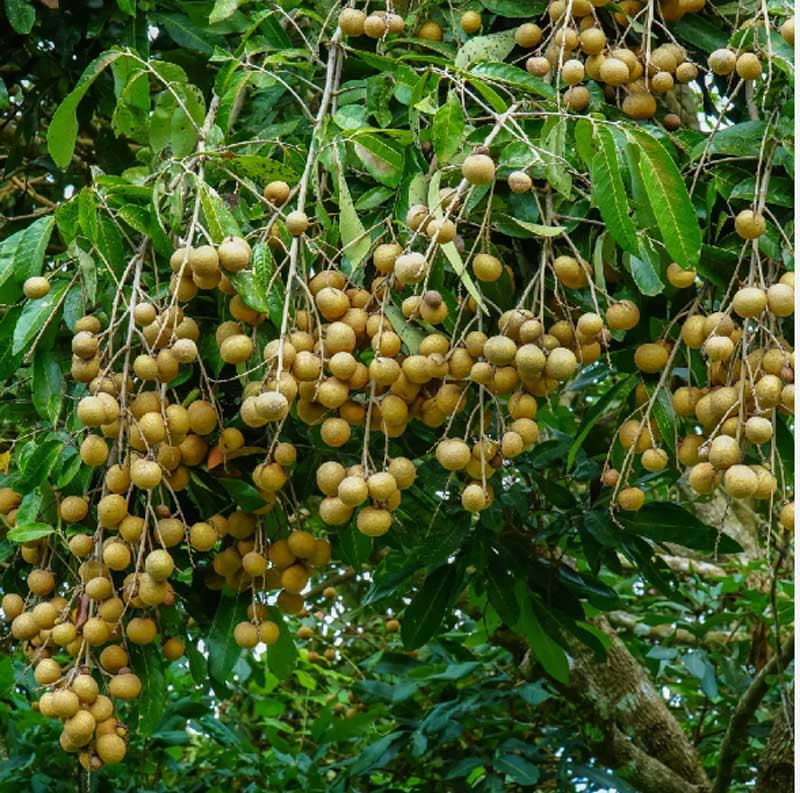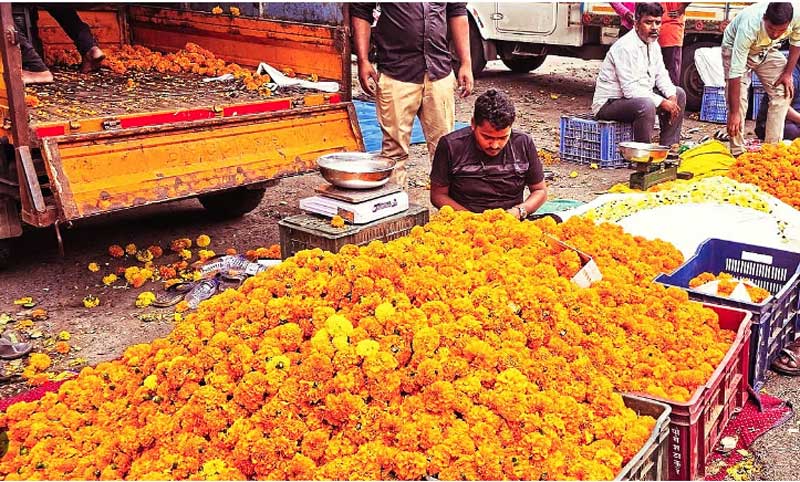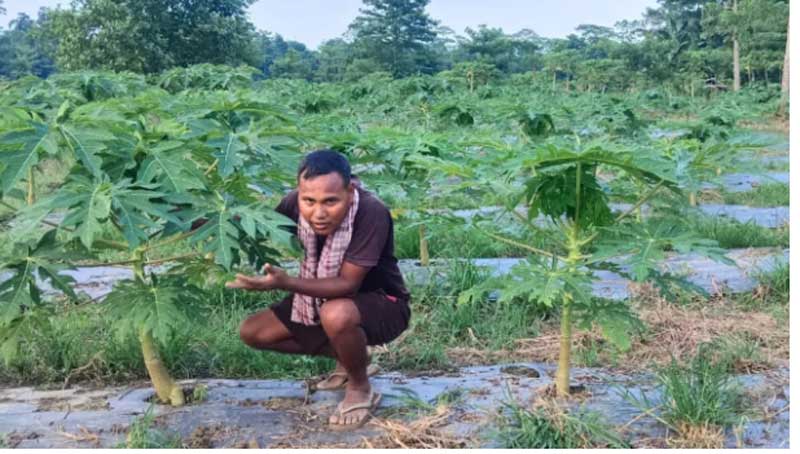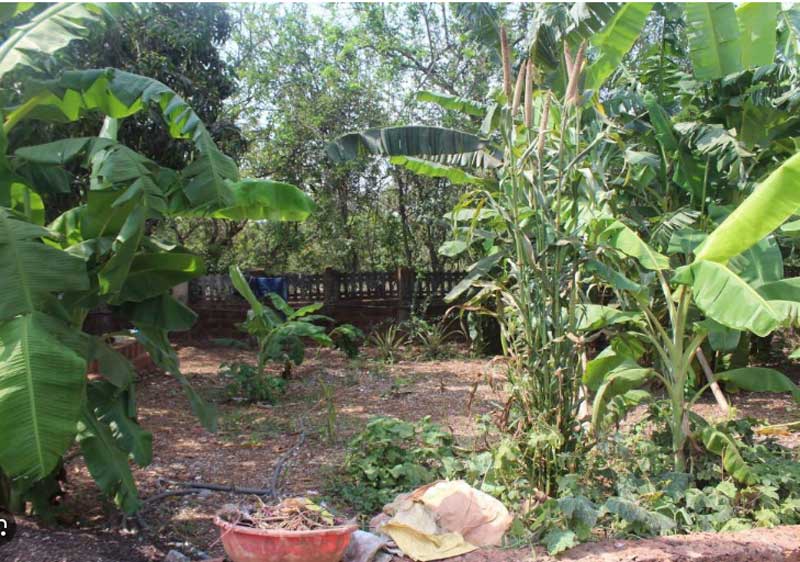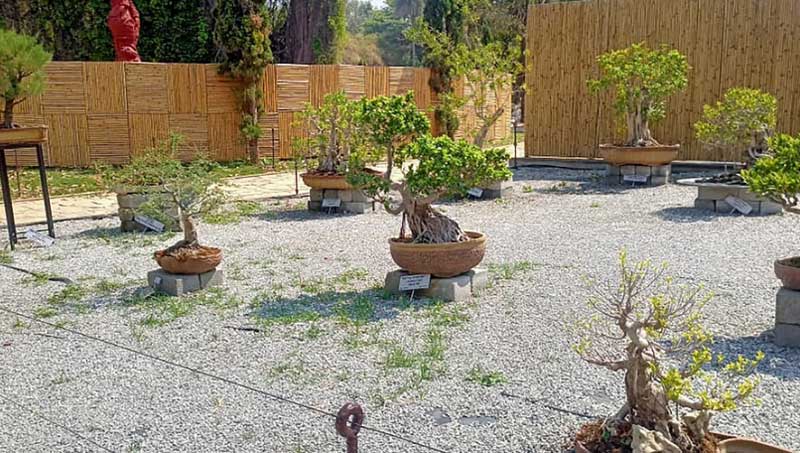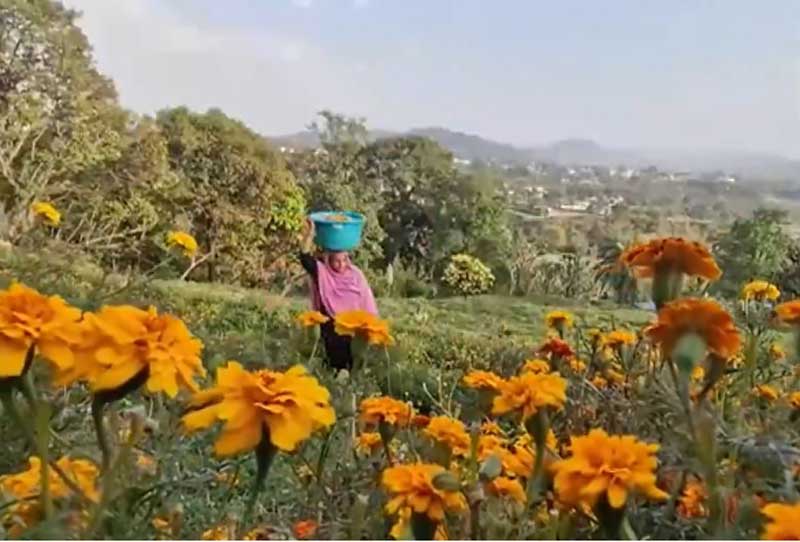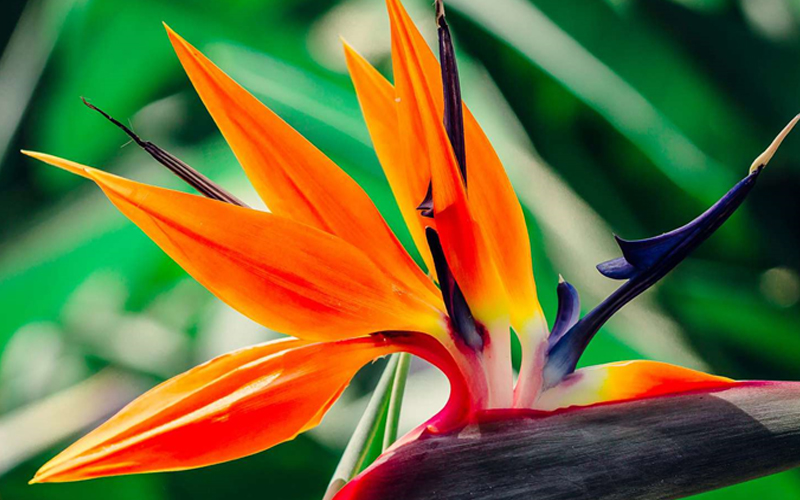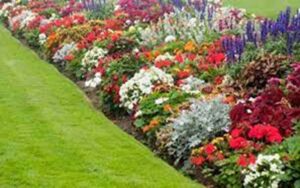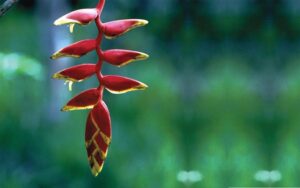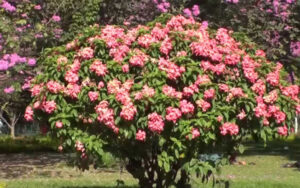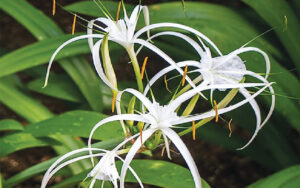Bird of Paradise (Strelitzia Reginae): Flower that looks like bird
Dr. Amar Singh
Former A. Chief Technical officer
I.A.R.I., New Delhi-10012
INTRODUCTION
Bird of paradise (Strelitzia reginae) is also known as ‘crane flower’. The genus Strelitzia includes 5 species, belongs to the family Sterlitziaceae and it is native to South Africa. It has a unique flower that resembles colored bird in flight which makes is exceptionally attractive landscape plant. It is an evergreen perennial herbaceous ornamental plant grown in the moderate sub-tropical climate. Plants are rhizomatous, usually reaches a height of 1 to 1.5 meters, foliage resembles small banana leaves which is evergreen, thick with long petioles, stiff, leathery, concave, and oblong, making it an attractive ornamental plant. It produces flowers in a horizontal inflorescence emerging from a stout spathe. The inflorescence is born at the top of a long scapes or pedicels and are remarkably shaped and colored, like the crested head of a bird. The flower consists of three brilliant orange upright sepals and three purplish-blue highly modified petals which emerge one at a time from the spathe. Two of the petals are joined together in a structure resembling an arrowhead with the third petal forming a nectary at the base of the flower. The long extended blue tongue from the stamens is a female part. Bird of paradise is a low-maintenance plant which is easy to grow and is suitable for landscaping. It does well in full sun to semi-shade and flower several times in a year.
This flower, popularly known as ‘Bird of Paradise’, is a green and charming flower of tropical climate region. It is also popular as Kartitva flower because of the Arunima color of the blooms. The leaves of this plant adapted to sunlight are like small banana leaves and the stalk attached to the leaf is thin and long.
It is suitable to grow along the side of water bodies like pond, lily pool, water tank, swimming pool, etc. as leaves do not fall in the pool water. It gives a highly delightful effect when grown along the side of an herbaceous border and in front of a shrubbery. It is also grown as specimen plant because of its unusual shape of the flower. It is gaining popularity as cut flower because of its brilliant colour, unusual appearance and long vase life. It is commercially grown for cut flower purpose in California, Florida, Hawaii, Israel and South Africa for both domestic and international markets. It is also grown in pots as an indoor plant which can be kept in the room having good natural lighting. In India, Bird of Paradise is grown in sub-temperate and sub-tropical regions such as Himachal Pradesh, Sikkim, Kalimpong and Darjeeling in West Bengal, Nilgiri hills and the Western Ghats, Bangalore and adjoining areas in Karnataka etc. Birds of Paradise bloom from September through May and its scientific name is ‘Strelitzia Reginae’
SPECIES AND THEIR DESCRIPTION
Some of the important species of Strelitzia are described below:
- Strelitzia Augusta (syn. Strelitzia Alba): It is also called as White Bird of Paradise. The inflorescence is composed of 2 spathes, from the middle of which emerge white flowers. It reaches up to 5 meter tall with long (60-90 cm) and oblong leaves.
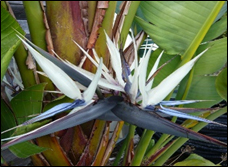
Strelitzia Augusta Var.
- Strelitzia caudate: It is commonly known as the Swaziland Strelitzia or African Desert Banana. It is unbranched and multi-stemmed that reach up to 6 meter tall height. It can be planted as a focal point in mid-size to large garden.
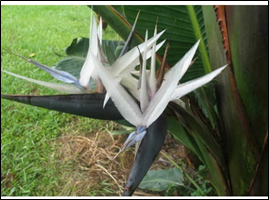
Strelitzia caudate Var.
- Strelitzia juncea: It is also called as leafless Bird of Paradise as it lacks leaf blades, leaves and stems look like reeds. This characteristic makes it easily distinguishable from common Bird of Paradise. Considerably slower growing than others and produces orange and blue flowers in winter and early spring.
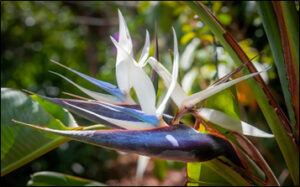
Strelitzia juncea Var.
- Strelitzia Nicholai: This is known as the Giant Bird of Paradise because it can grow into a tree with multiple stems; also called as white Bird of Paradise as it bears large flower predominantly white with dark blue-purple accents. It reaches up to the height of 5 cm long, rounded or heart shaped at the base with long (2 cm) leaf stalks.
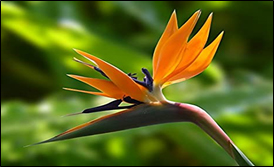
Strelitzia Nicholai Var.
- Strelitzia reginae: It is a clump forming perennial of about 1meter wide, stems grow up to 90 cm high, leaf stalk about 45 cm long and leaf blade about the same length. It produces its stunning flowers most of the year, but blooms most heavily from winter to spring, bearing flowers of red, yellow, orange and purple. Among the varieties, var. ‘Glauca’ has the attractive, glaucous foliage and stems, var.‘Humilis’, is a dwarf with dense clumps and ovate-oblong leaves while, var. ‘Rutilans’ has purple midrib. Mandela’s Gold is a yellow-flowered cultivar.
Strelitzia reginae Var.
- Strelitzia kewensis: This species is a garden hybrid developed from a cross between Strelitzia augusta and Strelitzia reginae.
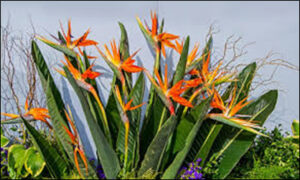
Strelitzia juncea plant in Field
Pollination
Bird of Paradise is mostly pollinated by birds and insects. Fruits are leathery capsule which contains numerous minute seeds; oily, orange aril. The one of the reasons for its suitability to grow in the garden is that it produces no airborne pollen, thus saving people from the pollen allergy.
Propagation
It is commonly propagated by seeds; separation of offsets and division of clumps. Usually, plant raised through seeds takes longer period to establish than the vegetatively propagated plants.
- Seed
Seeds must be sown while they are fresh. Soaking of seeds in water and keeping at room temperature for 3-4 days prior to planting helps in easy germination. While sowing, potting mixture should be moist and warm and can germinate in a 25-30 days depending upon soil temperature and seed freshness. Plants grown from seeds may take five to seven years to give economic yield.
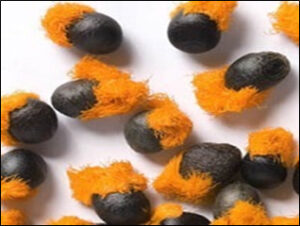
Strelitzia Seed
- Separation of offsets
Bird of paradise suckers freely, if plants are crowded in the garden or pot, it produces less number of flowers per plant or it will stop flowering. So, offsets can be separated to make new plants.
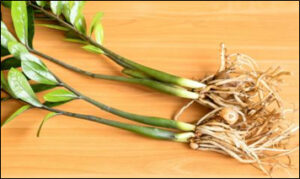
Separation of offsets
Division of clumps
The clump of mature plants that have been previously flowered for at least three years can be divided in spring prior to new growth. Lift the plant from the ground or pot and separate the underground rhizomes with a sharp knife making sure that each section contains a fan with the roots. The divided plants can be replanted in similar locations, at the same depth as previous plant. Newly planted plant should be watered thoroughly. Similarly, planting can be done in individual pot containing fertile and well-drained soil.
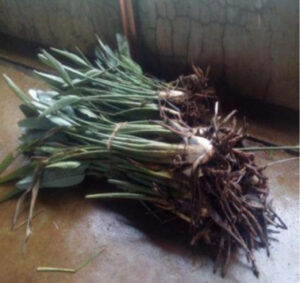
Bird of paradise clumps for division
CULTIVATION
Soil
Bird of Paradise can be cultivated in different soils. Moist soil is suitable for its development, but excess water accumulation is unfavorable for it. Except in areas very close to the sea, the sea may be affected by diseases such as wilt and root rot caused by other bacteria. It can be easily grown in coastal regions. From the point of view of temperature, 21 to 32 degree Celsius is quite suitable for the cultivation of this plant. It performs well in loamy soil rich in organic matters, well drained and slightly acidic. Light Bird of paradise can be grown in full sun or semi-shaded
Light condition.
Low light intensity may cause flower abortion, whereas too much exposure to too much sunlight, especially summer may scorch the leaves.
Temperature
The optimum temperature required for the growth and development of Bird of Paradise at day time is 20-25 o C and night temperature should not be less than 10 o C. They are sensitive to cold and need to be sheltered from frost as it can damage flowers and leaves although for a short period, it can tolerate lower and higher temperature without affecting the flower quality. A temperature higher than above 27°C tends to promote leaf production and inhibit flowering.
Planting
For commercial cultivation, planting may be done 60 x 60 cm apart with a planting density of 4 plants/m2.Pits of 90 x 90 x 90 cm are prepared and filled with soil, sand and farmyard manure at the ratio of 1: 1: 1. Planting should be done either during late spring or early summer. Bird of paradise plants produces tall flower stalks. To keep the flower stalks erect, the plants should be provided with the proper supporting system. Two or three rows of strings along the rows of plants supported by iron poles will be sufficient to support to the plants.
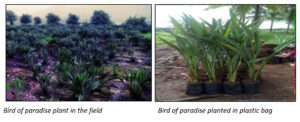
Manure and Fertilizers
Liquid nutrient feeding improves the growth and flowering. To get maximum production, spraying the plants with solutions containing 6 g superphosphate and 3 g potassium nitrate/L of water at an interval of 10 days is effective. It is also be applied for healthy growth of Bird of paradise, plants require phosphorus-rich fertilizer. Fertilizers should be applied monthly during the flowering season. Well-rotten farmyard manure at the rate of 4-5 kg/m2 and NPK 20g/ m2 about a month before flower stalk initiation should be applied to get maximum production.
Irrigation
During summer months, watering should be done twice a week to keep the soil moist and in the winter, thorough irrigation to the soil once in 7-10 days will be sufficient.
Due to rhizomatous nature and fleshy roots, the plants cannot withstand waterlogging. High soil moisture is however desirable during the flowering season. Use drip irrigation to overcome waterlogging and improve yield
Harvesting and Postharvest Handlings
Flowers are cut when the first floret opens. The storage life of flower can be extended up to one month by harvesting it in the tight bud stage and keeping in pulsing solutions containing 10% sucrose, 250ppm citric acid and 150ppm hydroxyquinoline citrate (HQC) for two days at 220C. Packaging and storage after harvesting, each flower of Bird of Paradise is wrapped with polythene sheet or butter paper. The stems are packed in cardboard box of size 120 x 30 cm and stored at an 8°C temperature.
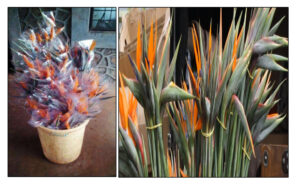
Harvest and packaging of Bird of paradise flower
Production
The number of flower spikes per plant per year depends upon the number of leaves, age of the plant and mode of propagation. A healthy and established clump can produce 10-15 flowers in a year.
Pests & Diseases
Bird of paradise is susceptible to mealy bugs, scale insects. Regularly inspect plants for these insects. For repellant purposes, apply to dilute solution of Soapy water into the plants to discourage insects. For severe insect infestations, apply the recommended dosage rate of Parathion or Malathion insecticide. Root rot is usually caused by a fungus, Thielaviopsis basicola, and Rhizoctonia. To prevent this, provide ample drainage in soil or in a pot and do not over-water. Apply a dilute fungicide drench using Dithane or Captan.
Botrytis cinerea is a major postharvest problem of a bird of paradise flowers. Slime production in flowers that provides a substrate for saprophytic mold growth. Dipping the inflorescence in benomyl or thiabendazole at 200 mg/l were found effective in controlling mold growth.
How to repot bird of paradise plant?
Bird of paradise is a fast-growing plant that needs to reach a certain size before blooming. Repot it every spring into a somewhat larger pot. A Bird of Paradise plant grows 3 to 4 feet tall, growing well in a 10-inch pot. A 5- to 6-foot plant usually thrives in a 14-inch pot. Once it reaches maturity, you want it to be pot-bound so it will bloom. If you repeat this, you will disrupt the bloom cycle.
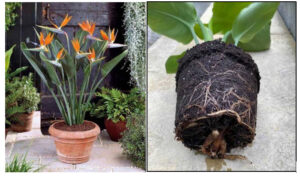
Bird of paradise plant potting and Repotting
How to take care of bird of paradise plant?
- reginae and S. nicolai are beautiful plants that can be grown successfully inside. The biggest drawbacks are their size — they grow to 5 to 6 feet tall — and the fact that the plants need three to five years before they flower. They also work well in warm climates as outdoor plants or in specimen plantings, where their flowers rise above the foliage for an impressive display.
Successful growth can be provided with some direct sun, plenty of bright light along with regular watering and warmth. Feed the plant with compost early in the spring before new growth begins, and then fertilize every week or so during the growing season. For the best chance of survival, grow the plant in a container that can be moved outside during the hot summer months, and brought back in for the winter. To bring the plant into bloom after four to five years of age, keep it pot-bound. Give it plenty of sunlight and feed it on time.
Bird of Paradise Flower Facts
- The bird of paradise is closely related to the banana plant, which is evident in its similar-looking large fan-like leaves.
- The giant bird of paradise, Strelitzia nicolai, is one of the largest species and can grow up to 30 feet in height.
- In the wild, birds of paradise flowers are pollinated by sunbirds, regularly feed on its sweet nectar. When the bird lands on its petals, the pollen is transferred to the bird’s chest, which gets transferred to the next flower the bird lands on.
- After cutting, the bird of paradise flower can last for one to two weeks.
- Due to its toxicity, keep the bird of paradise flower away from dogs and cats.
Bird of Paradise Flower Uses
With a bloom time that ranges from March to October, birds of paradise flowers are popular cut flowers, especially for summer floral arrangements. They are a great way to add a color and exoticism to any bouquet or centerpiece and are popular in weddings.
The bird of paradise is an easy flower to grow in gardens where the climate is warm. They also make great plants to grow in greenhouses and sunrooms due to their preference for humidity. Potting the plant in a container is also beneficial for flowering.
Dreaming about the tropics? Take a look at our tropical flower bouquets that include other exotic flowers such as colorful orchids paired with classic blooms such as roses and lilies.
| Note: This plant can fetch better profit to nurserymen as it is in great demand and liked by Everyone.
This plant is mildly toxic to dogs, cats and people, but it takes a short time to take effect.
|
Source: Anamika Gurung1* and Rajiv Kumar2*
1Ph.D. Scholar, 2Principal Scientist *Division of Floriculture and Medicinal Crops,
ICAR-Indian Institute of Horticultural Research, Hesaraghatta, Bengaluru – 560089

